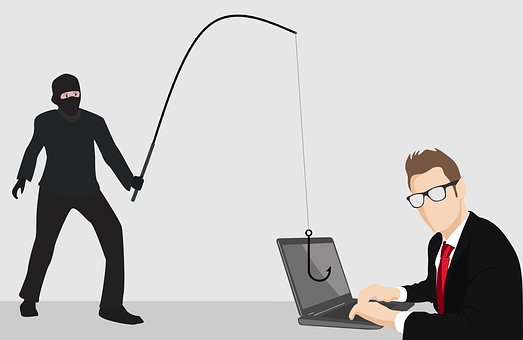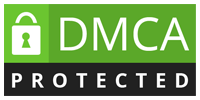Internet scams have been in existence since the beginning of information technology. Internet scams have been designed to gather or collect personal and confidential information of a user with the intent of stealing money or information from the victims by the attackers (perpetrators). Here are some of the typical internet scams that are present, especially on public domain websites:
An Australian woman considers you are cute, a Senegalese princess wants to give you money, investment experts are willing to let you in on a hot stock trade, and some tend to convince the internet user that he or she can actually make a substantial amount of money while working at home and not forgetting those phishing messages and pop up screens saying congratulations for being a winner for some substantial amount of money.
All these scams and security issues found on the internet have been brought about because the internet has become more predominant in all aspects of life. Thus, the attackers have seen a pool full of fish (internet subscribers) that when they send a million fake emails and scams, they can have a quite the number of victims in a single day. If all your online accounts are unprotected, it makes it easy for others to use your accounts and spread social engineering attacks with the intent of stealing data or money.
Internet subscribers as well as business’ that are using the internet to make their daily transactions need to be in total alert of internet scams to keep their data safe and avoid any downtime when there is a potential breakthrough by an attacker. The following are a list of the top used internet scams, that one is likely to face daily while browsing the internet, especially unsecured websites.
Phishing.
This is a widely used technique by online scammers. It is also considered one of the most hazardous scams, in that, one can get a random pop up page that needs the user will be asked to fill in an email address and the login, or your bank account information or even some crucial information that may give them quick access to your accounts, or work-related risks. An employee may be asked deliberately to log in to his or her email address via a phishing web page if the attacker is targeting at a particular person to get some specific data.
Compromised anti-virus software. (Trojan Horse)
This particular scam is also dangerous when someone fall victim, and it can target users who are looking for legitimate free online antivirus software to install. Once the program has been successful installed, it transfers the control panel of the computer of your electronic gadget to the malicious developers of that software; you can imagine the degree of damage the attacker can accomplish with this kind of access on someone else’s personal or company computer. Some of these malicious programs are capable of capturing your credentials as well as account login details and passwords which can be used by the attackers to do their dirty work.
Text messages scams.
Fake text messages are yet another way malicious attackers use to get unauthorized data from internet subscribers. This type of scam is more or less the same as phishing. Consider a case like a PayPal user getting a message which needs quick user response and prescribing a scam phone number belonging to a malicious attacker; the attacker may pretend to be PayPal agent and ask for your data which may help him get quick access to your account without your consent. In this case, it is recommended that the user ignore the message detail and log in to the official website to inquire about the issue as well as obtaining the accurate phone details.
Fake software Updates.
Most of these types of malicious software update alerts are Adobe Flash Player Updates, and Microsoft Office Updates because they need updating regularly. In this case, it is vital to distinguish which update is real and which one is not. If you are using bogus antivirus software, these malicious software updates may alter your computer, allowing scammers to access all of your information. Typically, the fake updates may redirect the user to a different web page with peculiar web domains which is one key aspect in identifying the legit and fake software updates. Then comes a worm which exploits weaknesses in your operating system. Chernobyl and Melissa viruses are a few recent examples which have caused millions of people issues.
Typosquatting.
This type of scam is new and may be very unlikely to identify since it may involve a slight change from the original website. Most of these compromised websites are those that a user may find ending with .om instead of .com. Normally the URL is the focal point of attention in this type of a scam. Consider web manipulation like www.microsoft.com and www.microsofl.com. In this case, if a user is not careful, he or she may end up giving his or her Microsoft login details to the malicious attacker.
Free Wi-Fi.
Free Wi-Fi attacks are pretty much popular and common in cities where visitors use public Wi-Fi in hotels and social places, when they are away from a personal home network as well as an office network. Normally, internet subscribers find it hard to minimize their data usage depending on their budget and are allowed free Wi-Fi. Many if not all will take the deal and have their phones and laptops connect to the Wi-Fi. It is always recommended to remove the network once the need is accomplished and have your device forget the hotspot.
Online shopping scams.
Online shopping scams are another approach to still an unsuspecting persons cash, by and large, while making you believe you’re getting a deal. They are common around the holiday time frame but can happen throughout the year. Now and then you’ll experience counterfeit sites, on different occasions you may get misled by individuals offering to offer you something straightforward, instead of on, eBay or Amazon, so you can “set aside extra cash.” Remember that these large web-based business’, for the most part, ensure your exchanges, so don’t feel tempted to save money on your purchase and end up with nothing.
Despite the need and campaigns for safety and information privacy, the current world order is moving in an era of the Internet of things where the internet has become a part of our day to day lifestyle. In a recent survey that was conducted by (stats, 2019), out of the 7.7 billion people in the world, about 4.4 billion people have their data uploaded on an online website. The need for personal data privacy has also become a business opportunity for those who have the capabilities of maneuvering throughout the internet without being noticed. The truth of the matter is that as the internet advances, it also becomes complex to the point that even the developers are not able to identify all the weakness within the internet architecture.
Cybercrime is as harmful to the government as it is to the corporations and individuals. In May 2017, the US President, Donald Trump signed an order with the focus on advancing cybersecurity in the US–particularly for the country’s infrastructure and federal IT networks. We are living in the Cyberage, and in today’s world, the Internet and computers have a significant impact on our way of living, social life and the way we conduct businesses. With the growth of the internet, network security has become a primary concern in today’s world.




